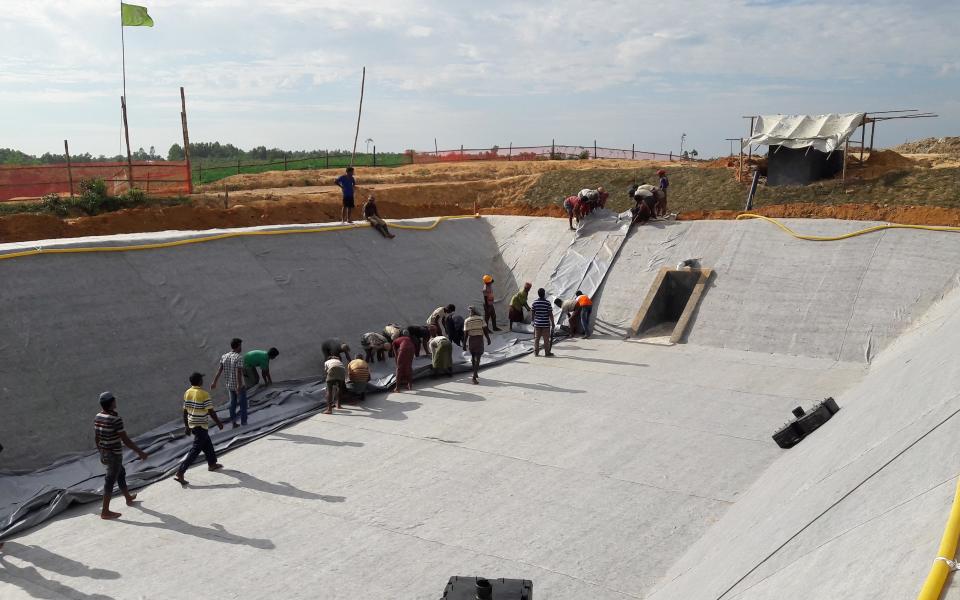Largest-ever sewage treatment plant opens in Bangladesh refugee camp Cox's Bazar

The largest sewage treatment facility ever constructed in a refugee camp has opened in Bangladesh and has been heralded as a huge step forward in the management of humanitarian crises.
The industrial-scale treatment plant built in Cox's Bazar – home to nearly one million Rohingya refugees who have fled persecution in Myanmar – will be able to deal with the human waste of 150,000 people a day, roughly equivalent to the population of Oxford.
Construction of safe sanitation systems in refugee camps is a challenge: poor infrastructure often means human waste is often dumped in nearby fields or open pits, contaminating already scarce water supplies and becoming a breeding ground for disease.
Cox's Bazar saw more than 200,000 cases of acute diarrhoea last year, as well as respiratory infections and skin diseases like scabies - all related to poor sanitation and hygiene.
Diarrhoea is currently the second biggest killer of young children globally and a report published by Unicef on Friday – World Water Day – found that more children die from contaminated water than violence in war due to poor infrastructure.
But the ecological treatment centre – built by Oxfam and funded by the UNHCR, the UN's refugee agency – will sustainably treat 40 cubic metres of faecal sludge on site every day. It is made is made up of treatment ponds, or ‘anaerobic lagoons’, where the human waste is biologically broken down.
“The system is absolutely extraordinary, it’s the first time that there has ever been such a huge biological disposal site in a refugee camp,” said Andy Bastable, the head of water and sanitation for Oxfam.
“If faecal waste is not properly and safely disposed of then it ends up contaminating the groundwater and people drink it. Or you can get sewage swimming all around the camp, which has many health implications,” he added. “A sustainable way of dealing with faecal sludge is a huge achievement.”
In emergencies, the most common method of waste disposal is to pay private companies to collect the waste from latrine toilets in tankers but this is often dumped in nearby fields or rivers.
Treating the faecal sludge on site will prevent this from happening, says Oxfam.
“Before Bangladesh there was virtually zero sewage treatment in any refugee situation,” Mr Bastable said. “For instance, there’s the horrible example in the 2010 Haiti earthquake, where a big hole was dug into the ground in a solid waste disposal area. It turned into a big, horrible quagmire.”
Oxfam’s treatment plant, which cost roughly £150,000 to construct, was built on land provided by the Bangladeshi government and is one of many waste management innovations currently under development in the camp.
According to the Andrej Mahecic, UNHCR spokesperson, there are plans to construct more treatment facilities across the refugee camp, which is likely to remain in place for many years to come.
“This model will be rolled out across other sites in Cox’s Bazar area in 2019 and UNHCR is considering replicating it in future refugee crises,” he said.
The plant, designed by a German company, Borda, also produces biogas and options to supply this as cooking fuel are currently being explored.
“The initial investment is well worth it because the plant is cheap and easy to run and could last for 20 years – benefiting local communities when this emergency is over,” said Salahuddin Ahmmed, Oxfam water and sanitation engineer. “We expect to replicate this model in future crises.”
Protect yourself and your family by learning more about Global Health Security
